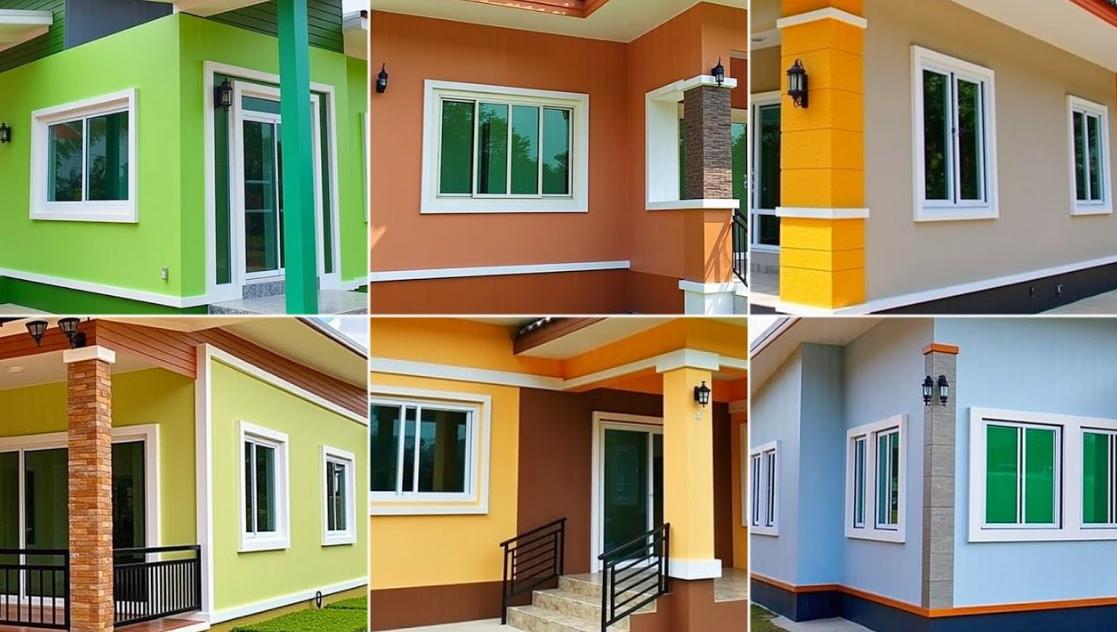So when you think of home insurance, you probably think of where you live, how old your roof is or what kind of security systems you have. But did you also know that something as uncomplicated as your home’s choice of paint could affect your insurance costs? It’s true! Insurers are increasingly paying attention to prevention homeowners are employing, and certain varieties of exterior paint could make your home not just safer but cheaper to insure as well.
Thank you for reading this post, don't forget to subscribe!This blog continues the insightful discussion of the little-known relationship between house paint and home insurance rates. We’ll explain how paint protects your home, which types of paint may affect your insurance, share real-world examples of paint’s effect on claims, and offer actionable advice to help you pick the right paint for your property.
How Paint Protects Your Home
At its most basic, exterior paint is a step up from simply adding color to your house. It provides protection from environmental factors like UV rays, moisture, and pests. For insurers, a house that’s well-maintained and properly painted is a sign you’re taking steps to preserve your home, reducing their risk of having to shell out costly claims.
The Shields That Protect Against Moisture and Mold
Moisture is one of the most destructive forces that your home can encounter. Prolonged exposure can cause structural problems, rotting wood, and mold. Water resistance: Quality paints often have water-resistant properties that will help seal surfaces, limiting water penetration and any resulting damage (mold, mildew, etc.).
Protection Against UV Damage
Over time, ultraviolet (UV) rays that come from the sun can deteriorate certain types of building materials, resulting in fading, cracking or warping. UV-resistant paints help to reflect oppressive rays, which increases the life of your home’s exterior and decreases the likelihood of writing an expensive claim due to damage within your home.
Defense Against Pests
Some paint is treated with additives that repel pests like termites or ants, adding another layer of protection to your home. Fewer bug infestations means fewer risks of structural damage, and that’s something insurers should appreciate.
Some insurance providers are beginning to recognize paint as an integral part of home maintenance and they’re beginning to treat that as a risk-reducing measure.
The Effect of Certain Paint Types
Insurers don’t view all paints equally. Some types of paint have features built in that may significantly enhance your home’s safety and longevity. Below are the key categories and how they could affect your insurance premiums.
Water-Resistant Paints
Specifically designed to keep moisture out, water-resistant or waterproof paints are applied to surfaces to be protected with a coat of paint. Houses that apply these coatings to their outside encounter much less water-related troubles, from leaks to mildew outbreaks. Insurance companies understand that homes safeguarded against water damage are less likely to file claims, so may lower premiums for prevention.
Fire-Retardant Paints
Fire retardant paints are designed to resist the spread of flames down the wall, while stopping fire damage. This is particularly important if you live in areas at risk for wildfires. Because insurers often provide discounts for homes that implement fire-mitigation strategies, applying fire-retardant paint is one of the easier and most useful things a homeowner can do.
Anti-Microbial Paints
These paints are particularly popular for homes in humid or flood-prone areas. Anti-microbial coatings will stop the growth of mold, mildew and bacteria, and that can prevent expensive repairs. Insurance providers assessing mold filings may view this proactive approach favorably.

Eco-Friendly Paints
While environmentally friendly paints may not have a direct impact on your insurance, insurers like to see you measuring up with top-of-the-line, high-quality materials.
Case Studies or Examples
To anchor this concept to real-world cases, take a look at these examples of the impact of house paint on insurance outcomes.
Rebecca’s Water Problem (New Orleans, LA): Rebecca is a homeowner in a coastal city that experiences severe rainfall and wind events. When Hurricane Ida dumped enormous amounts of water on her neighborhood, her house took much less moisture damage than most of her neighbors’. Thanks to her choice of paint, she didn’t have to file a major claim, and on the next renewal cycle, her insurer adjusted her premiums positively.
Lucas and the Wildfires (California): Lucas, who lives in an area of California prone to wildfires, painted his house with fire-retardant paint. His home sustained minor damage during a nearby wildfire, while many homes in the surrounding area were decimated. His insurance reimbursed not just the small repairs, but also reduced his premiums because of his fire-prevention preparation.
Jessica’s New Mold-Free Basement (Seattle, WA): Jessica painted all of her basement (a naturally damp environment) with anti-microbial paint. Other homes in her neighborhood experienced mold problems after heavy rains, but Jessica found herself free of any such claims due to her proactive approach. When she renewed her policy, her insurer had not only noticed but rewarded her preventive measure.
Expert Opinions
Digging deeper into this relationship, I contacted a few industry professionals for their thoughts.
Mike Roberts, Insurance Agent: “Insurance companies love anything that lowers risk. Using high-performance, protective paints signals that you’re caring for your home diligently, which reduces the chance of expensive claims. “This could translate into savings on your premiums, especially for homes in high-risk areas.”
Samantha Lee, Painting Contractor: “The market for specialty paints has really grown a lot in the past 10 years. Homeowners are not only looking at fire-retardant or water-resistant coatings, and this is especially true as insurance-based incentives start to line up with those choices. It’s an interesting and good trend.”
Practical Tips for Homeowners
Want to take advantage of lower insurance costs influenced by smart paint color selection? Here are steps you can take today.
But here the focus is on long-term quality over the initial cost — premium paints may be more expensive, but they provide valuable protection and fewer insurance claims over time.
Contact Your Insurance Company: Investigate whether your insurance company provides discounts or premium reductions for homes with protective exterior features, including certain coatings of paint.
Select Paint Based on Climate: If you live in places that may face coastal, wildfire and humid risks, choose paint that can mitigate those (like water resistant, flame-retardant).
Document Preventative Measures: Save receipts and take photos when you make protective enhancements to your home, such as applying protective paints. Insurers sometimes require proof during the claims process or when reviewing your policy.
Collaborate with Experts: Engage professional painting contractors who can suggest and use your home’s ideal paint.
Protect Your Paint Job: Protective coatings require periodic re-application in order to continue to reap their benefits. Refer to the manufacturer’s recommendations for maintenance or re-coating schedules.
Why Paints Should Be Included in Your Home Defense Plan
While it’s something people often overlook, the type of paint you use on your house and its quality can help protect your home and indicate to insurers that you care about property maintenance. Low-cost repairs are possible with high-performance paints, which can help you minimise water damage, limit fire risks and avoid having to pay inflated insurance premiums.
Ordering the right paint is more than a matter of aesthetics — it’s about a better, safer and more resilient home. And due to potential savings on insurance, it seems that cleaning up your home’s exterior may be one of the savviest investments you make this year.
Are you getting ready to future-proof your home and perhaps lower your insurance premiums? Assess your current paint protection or consult a professional to opt for the upgrade first.




9tdjtm
k47n6s
ipbkwf